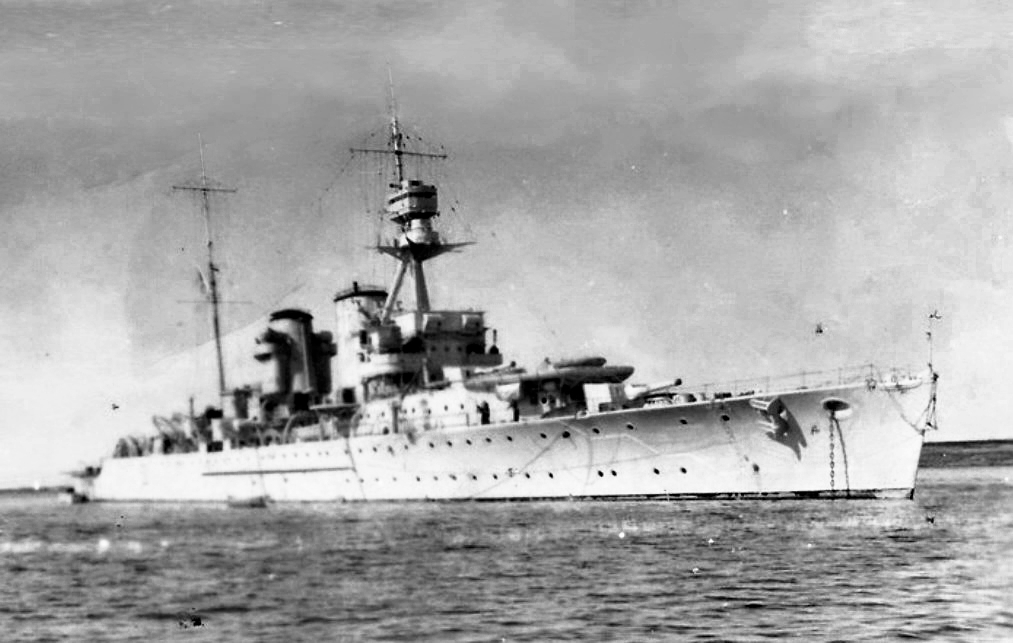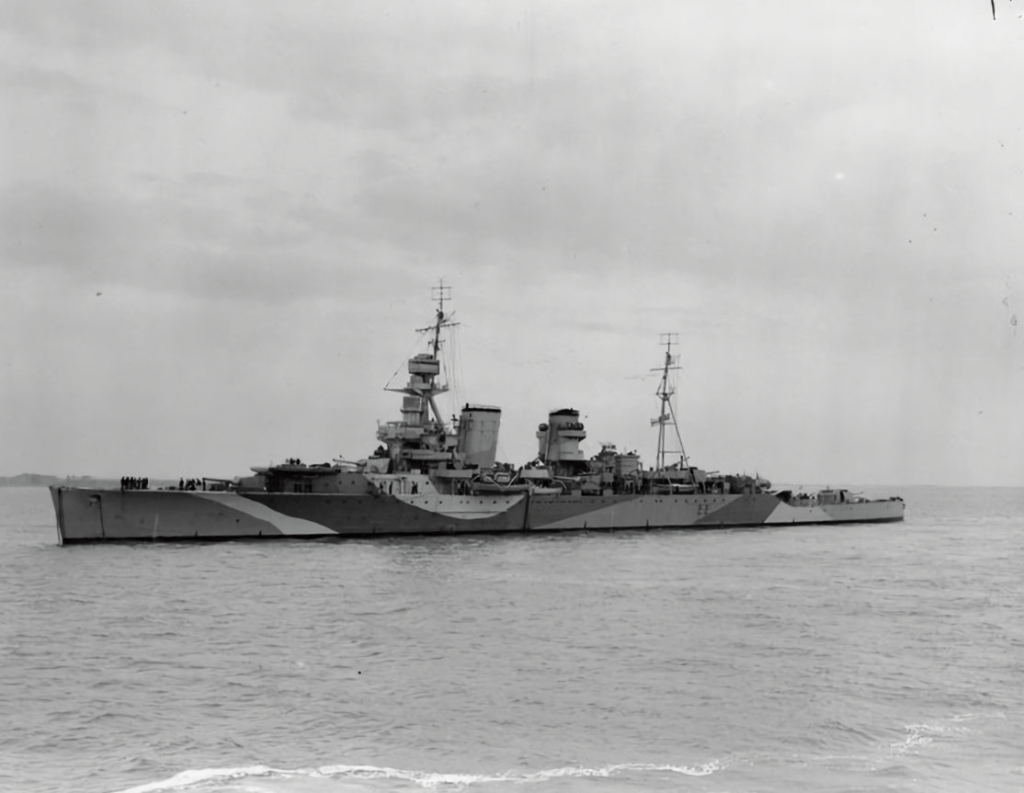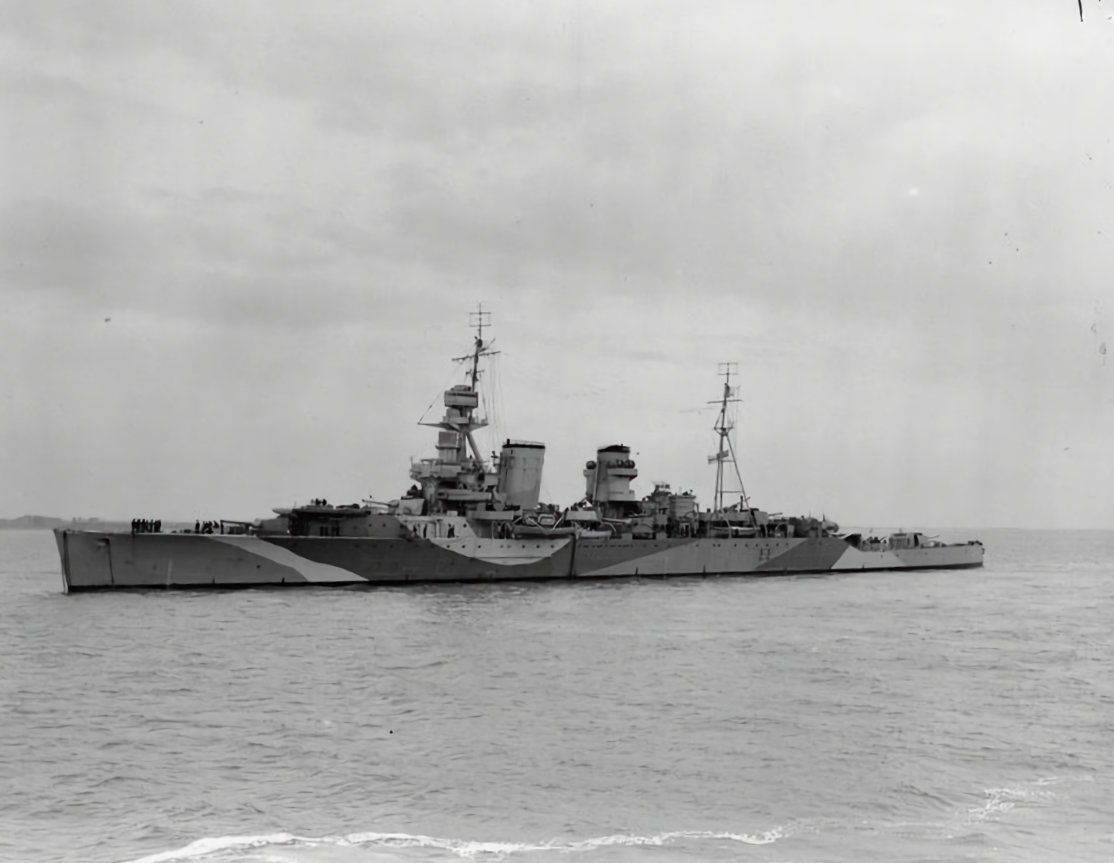British Heavy Cruiser HMS Hawkins
HMS Hawkins was the lead ship of the Hawkins-class heavy cruisers, built for the Royal Navy during World War I. Conceived in 1915 as a response to German commerce raiders, she was designed to be fast, have long endurance, and be heavily armed with 7.5-inch guns – larger than those on contemporary British light cruisers. Although launched in 1917, she entered service in 1919, after the war had ended.
During her career, Hawkins served on the China Station, with the Atlantic Fleet, and in the Second World War primarily on convoy escort and patrol duties. She was reclassified as a heavy cruiser under the London Naval Treaty of 1930 due to her gun calibre exceeding 6.1 inches. She was scrapped in 1947.
HMS Hawkins – Career Timeline
1915–1916 – Design and Laying Down
- Designed during WWI as part of the Admiralty’s response to German commerce raiders.
- Planned for long range, good speed, and heavier guns than light cruisers.
- Laid down at Chatham Dockyard on 3 June 1916.
1 October 1917 – Launch
- Launched while WWI was still ongoing, but completion delayed by wartime material shortages and postwar priorities.
23 July 1919 – Commissioning
- Commissioned into the Royal Navy after the end of WWI.
- Became flagship of the 5th Light Cruiser Squadron on the China Station.
1919–1928 – Peacetime Far East Service
- Stationed in Asian waters, protecting British interests and trade routes.
- Took part in exercises and diplomatic visits to Japanese, Chinese, and colonial ports.
1928 – Refit
- Modernisation refit, new anti-aircraft weapons fitted.
1930 – London Naval Treaty Reclassification
- Treaty placed cruisers with guns over 6.1 inches into the “heavy cruiser” category.
- HMS Hawkins became officially classified as a heavy cruiser.
1935 – Training Duties
- Reduced to a training role and placed in reserve periodically during the mid-1930s.
World War II Service
1939 – War Outbreak
- Reactivated for wartime service.
- Assigned to the South Atlantic for trade protection and hunting German raiders.
April 1940 – Indian Ocean Deployment
- Transferred to the East Indies Station for convoy escort and patrol duties.
1941 – South African Waters
- Guarded shipping routes around Cape of Good Hope.
- Intercepted Vichy French merchant shipping.
1942 – East African Coast & Madagascar
- Took part in Operation Ironclad – the British invasion of Vichy-controlled Madagascar to prevent Japanese use of the island as a submarine base.
- Provided naval gunfire support during the landings at Diego Suarez.
1943 – Return to South Atlantic
- Continued escort and patrol duties.
- Modernised anti-aircraft armament further.
1944 – Home Waters
- Assigned to Western Approaches Command.
- Provided support for cross-Channel operations and convoy defence.
June 1944 – Normandy Landings
- Bombarded German positions during Operation Neptune (D-Day).
- Operated off Sword Beach in a naval gunfire support role.
1945 – End of War
- Returned to the UK for decommissioning.
1945–1947 – Reserve & Disposal
- Placed in reserve and stripped of useful equipment.
- Sold for scrap in August 1947 and broken up at Blyth.
Sister Ship Context
- HMS Raleigh – Commissioned 1921, wrecked off Labrador in 1922.
- HMS Frobisher – Served extensively in WWII (Madagascar, Normandy); scrapped 1949.
- HMS Effingham – Rebuilt with 6-inch guns, sunk by German aircraft in Norway, 1940.
- HMS Cavendish / Vindictive – Converted to aircraft carrier Vindictive, later rebuilt as cruiser; scrapped 1946.
Specifications of HMS Hawkins
| Feature | Specification |
|---|---|
| Class & Type | Hawkins-class heavy cruiser |
| Displacement | 9,750 tons (standard), 12,190 tons (full load) |
| Length | 605 ft (184.4 m) overall |
| Beam | 65 ft (19.8 m) |
| Draught | 19 ft (5.8 m) |
| Propulsion | 4-shaft Parsons steam turbines, 12 Yarrow boilers, 60,000 shp |
| Speed | 30 knots (56 km/h) |
| Range | ~5,640 nautical miles at 14 knots |
| Complement | 712 officers and men (wartime up to ~850) |
| Armament (as built) | 7 × single 7.5-inch (190 mm) guns; 10 × 3-inch (76 mm) AA guns; 6 × 21-inch torpedo tubes |
| Armament (WWII) | Modified AA armament; torpedo tubes removed |
| Armour | Belt: 3 in (76 mm); Deck: 1–1.5 in (25–38 mm); Conning tower: 3 in (76 mm) |
| Aircraft | None (design did not include aircraft facilities) |
| Laid Down | 3 June 1916 |
| Launched | 1 October 1917 |
| Commissioned | 23 July 1919 |
| Fate | Scrapped 1947 |










